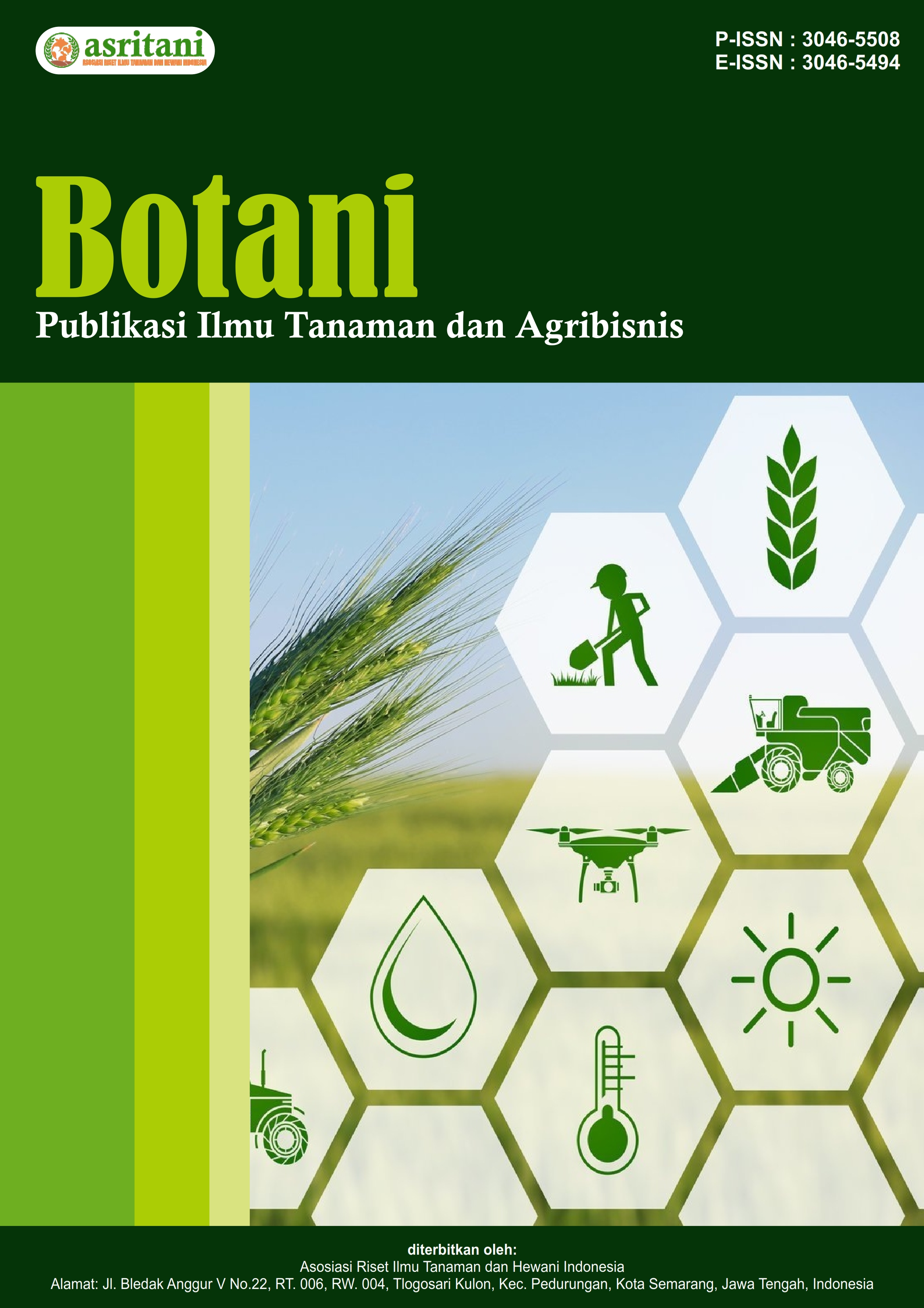Artikel Review : Efektifitas Ultrasound-Assisted Freezing terhadap Laju Pembekuan Frozen Food
DOI:
https://doi.org/10.62951/botani.v2i2.337Keywords:
ultrasound-freezing, HIUS, frozen-food-quality, ice-crystals, freezing-rate-enhancementAbstract
. Freezing is a widely used preservation method to extend the shelf life of food, yet conventional freezing often produces large ice crystals that damage tissue structures and reduce product quality. This study aims to evaluate the effectiveness of ultrasound-assisted freezing technology in improving the quality of frozen food. A literature review method was employed, focusing on scientific publications from 2015 to 2025. The results show that ultrasound application, particularly High-Intensity Ultrasound (HIUS), can accelerate the freezing rate by enhancing ice nucleation and improving heat transfer efficiency. The formation of smaller and more uniformly distributed ice crystals helps preserve the structural integrity of food and reduces water loss during thawing. The effectiveness of this technology varies depending on the type of food material, temperature, duration, and ultrasound intensity. In animal-based products, it helps maintain texture and color, while in plant-based materials, it preserves moisture content and firmness. However, excessively high intensity may pose a risk of protein denaturation, especially in sensitive materials such as fish. These findings suggest that ultrasound-assisted freezing is a promising innovative solution to improve both the quality and efficiency of the food freezing process.
References
Alizadeh, E., Chapleau, N., de Lamballerie, M., et al. (2007). Effect of different freezing processes on the microstructure of Atlantic salmon (Salmo salar) f illets. Innovative Food Science & Emerging Technologies, 8(4): 493–499.
Dolatowski, Z. J., Stadnik, J., & Stasiak, D. (2007). Applications of ultrasound in food technology. Acta Scientiarum Polonorum Technologia Alimentaria, 6(3), 88-99.
Fu, X., Belwal, T., Cravotto, G., & Luo, Z. (2020). Sono-physical and sono-chemical effects of ultrasound: Primary applications in extraction and freezing operations and influence on food components. Ultrasonics Sonochemistry, 60, 104726.
Gallo, M., Ferrara, L., & Naviglio, D. (2018). Application of ultrasound in food science and technology: A perspective. Foods, 7(10), 164.9.
Luo, W., Sun, D. W., Zhu, Z., & Wang, Q. J. (2018). Improving freeze tolerance of yeast and dough properties for enhancing frozen dough quality - A review of effective methods. In Trends in Food Science and Technology (Vol. 72, pp. 25–33). Elsevier Ltd. https://doi.org/10.1016/j.tifs.2017.11.017
Peña-Gonzalez, E., Alarcon-Rojo, A. D., Garcia-Galicia, I., Carrillo-Lopez, L., & Huerta-Jimenez, M. (2019). Ultrasound as a potential process to tenderize beef: Sensory and technological parameters. Ultrasonics Sonochemistry, 53, 134–141. https://doi.org/10.1016/j.ultsonch.2018.12.045
Soltani Firouz, M., Sardari, H., Alikhani Chamgordani, P., & Behjati, M. (2022). Power ultrasound in the meat industry (freezing, cooking and fermentation): Mechanisms, advances and challenges. In Ultrasonics Sonochemistry (Vol. 86). Elsevier B.V. https://doi.org/10.1016/j.ultsonch.2022.106027
Sukusno, P., H. Tambunan, A., Agus Setiawan, R. P., & Aris Purwanto, Y. (2018). The Effect of Receiver on the Performance of Freezer. Jurnal Keteknikan Pertanian, 6(3), 343–350. https://doi.org/10.19028/jtep.06.3.343-350
Tao, Y., & Sun, D. W. (2015). Enhancement of food processes by ultrasound: a review. Critical reviews in food science and nutrition, 55(4), 570-594.
Xiong, G., Fu, X., Pan, D., Qi, J., Xu, X., & Jiang, X. (2020). Influence of ultrasound-assisted sodium bicarbonate marination on the curing efficiency of chicken breast meat. Ultrasonics Sonochemistry, 60. https://doi.org/10.1016/j.ultsonch.2019.104808
Xu, B. G., Zhang, M., Bhandari, B., Cheng, X. F., & Sun, J. (2015). Effect of ultrasound immersion freezing on the quality attributes and water distributions of wrapped red radish. Food and Bioprocess Technology, 8, 1366-1376.
Xu, B., Zhang, M., Bhandari, B., & Cheng, X. (2017). Influence of power ultrasound on ice nucleation of radish cylinders during ultrasound-assisted immersion freezing. International Journal of Refrigeration, 46, 1-8.
Ying, Y., Xiang, Y., Liu, J., Chen, X., Hu, L., Li, Y., & Hu, Y. (2021). Optimization of ultrasonic-assisted freezing of Penaeus chinensis by response surface methodology. Food Quality and Safety, 5. https://doi.org/10.1093/fqsafe/fyaa034
Zhang, C., Sun, Q., Chen, Q., Kong, B., & Diao, X. (2020). Effects of ultrasound-assisted immersion freezing on the muscle quality and physicochemical properties of chicken breast. International Journal of Refrigeration, 117, 247-255.
Zhu, Z., Zhang, P., & Sun, D. W. (2020). Effects of multi-frequency ultrasound on freezing rates and quality attributes of potatoes. Ultrasonics Sonochemistry, 60. https://doi.org/10.1016/j.ultsonch.2019.104733
Downloads
Published
How to Cite
Issue
Section
License
Copyright (c) 2025 Botani : Publikasi Ilmu Tanaman dan Agribisnis

This work is licensed under a Creative Commons Attribution-ShareAlike 4.0 International License.





